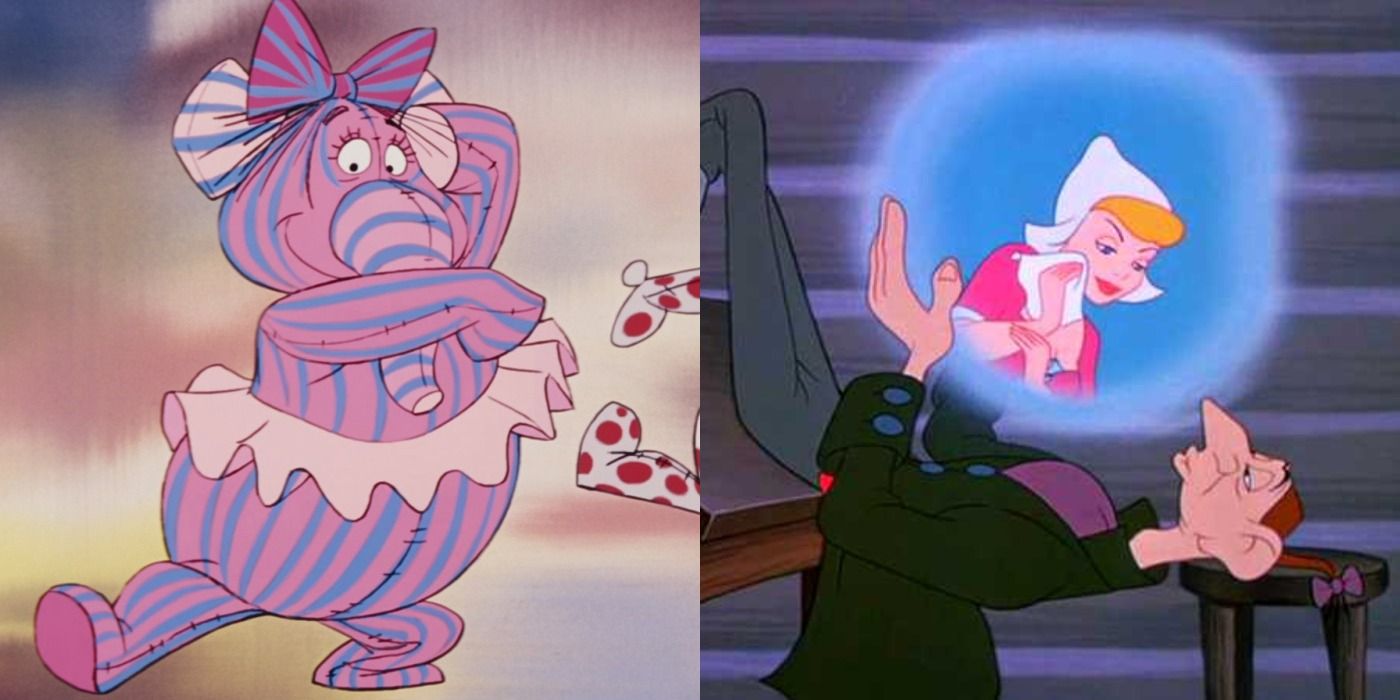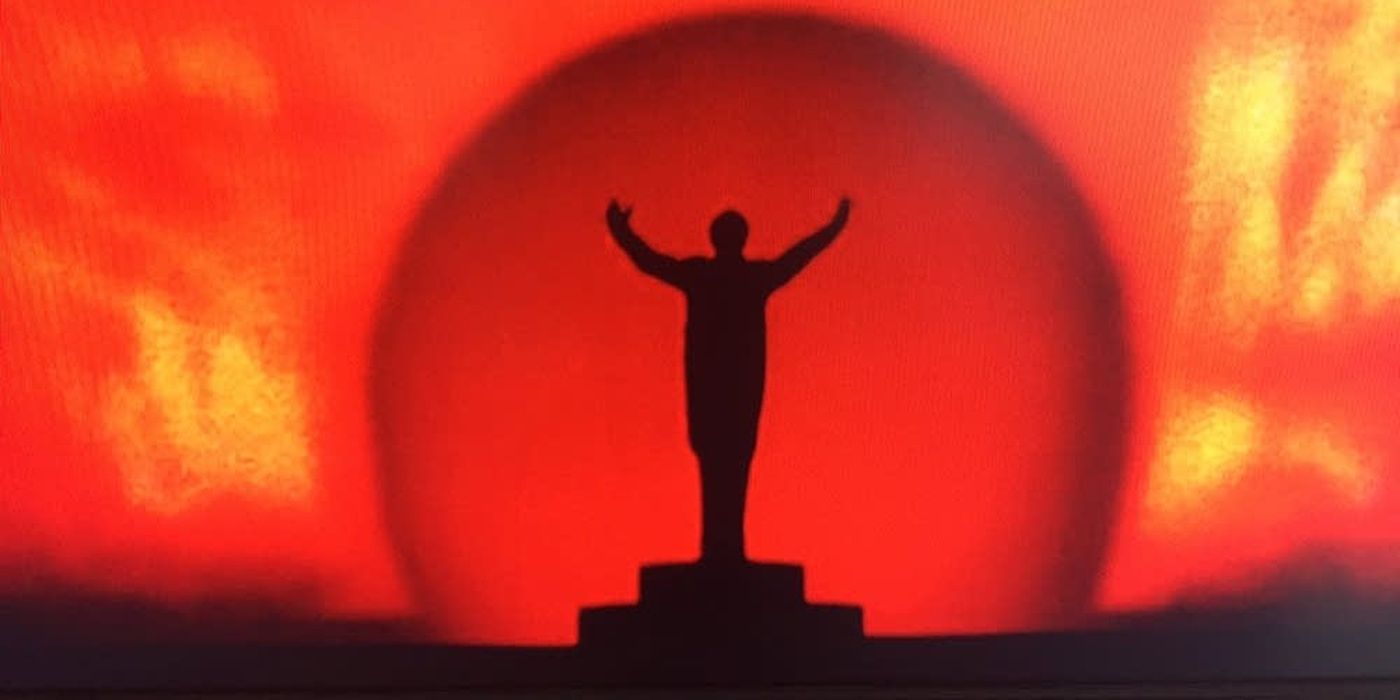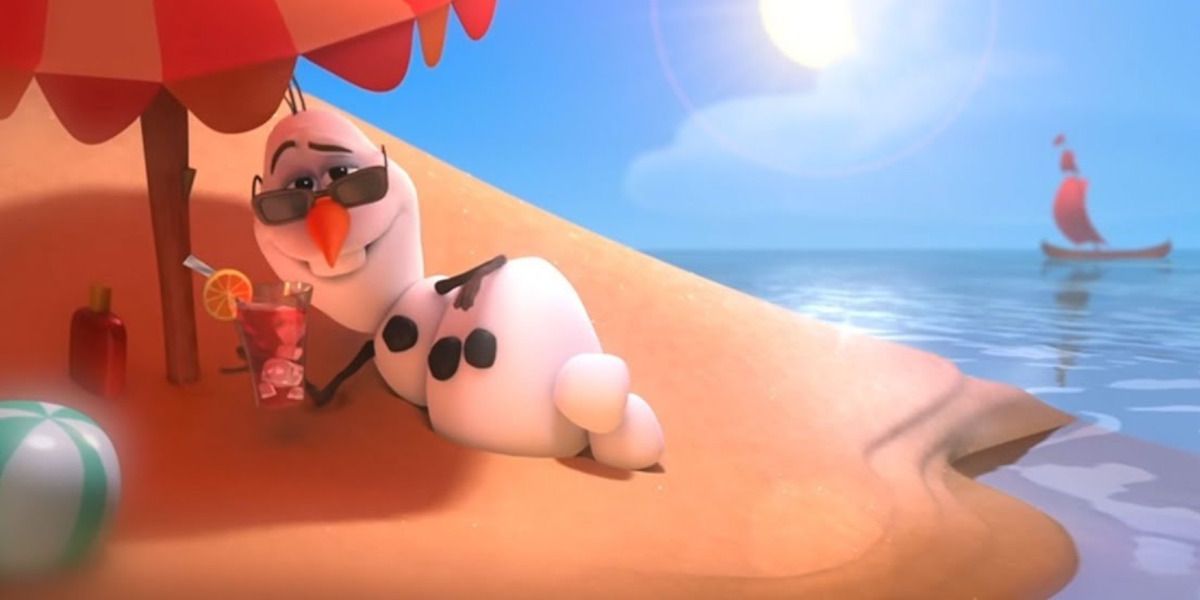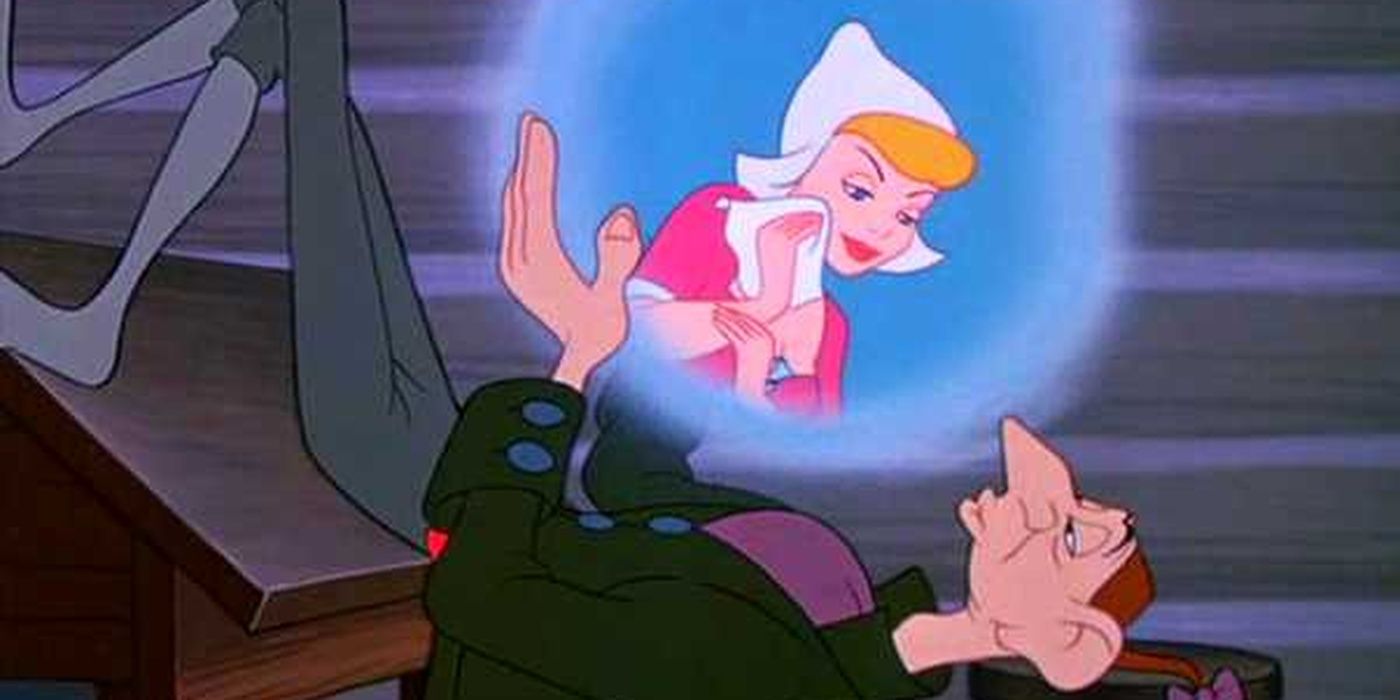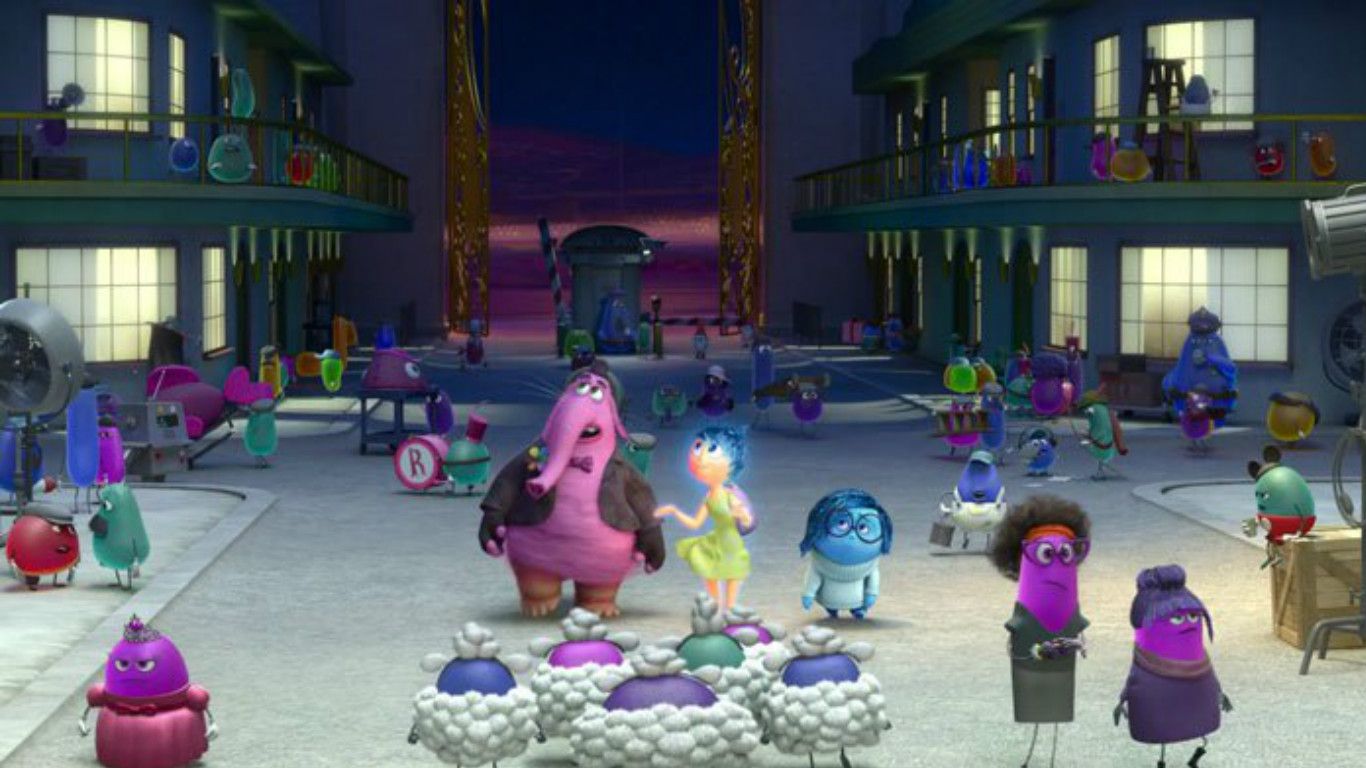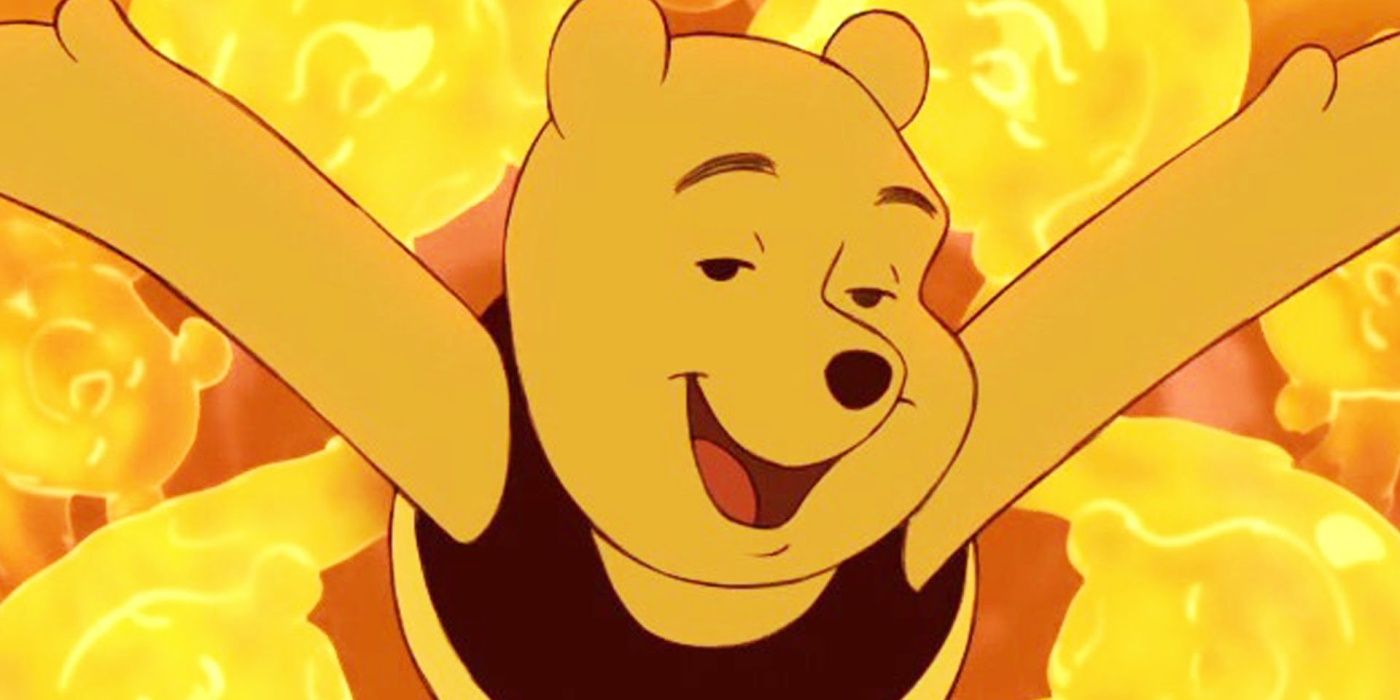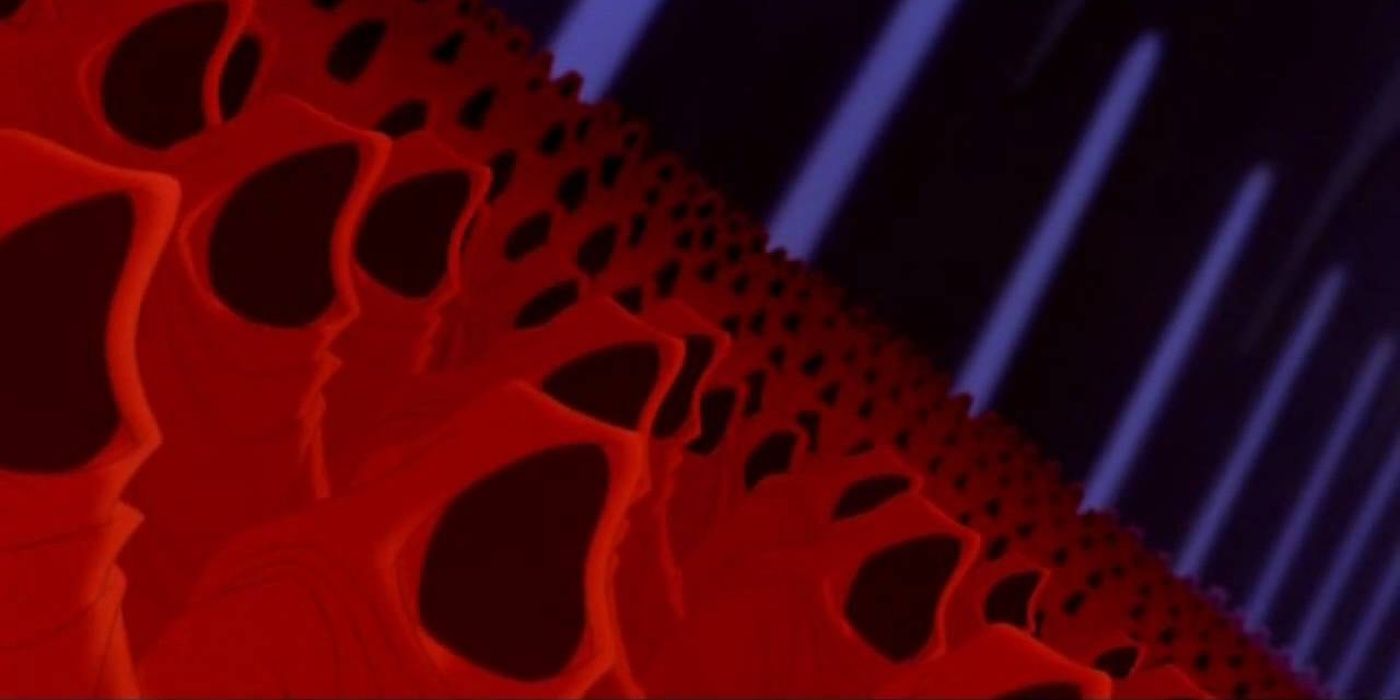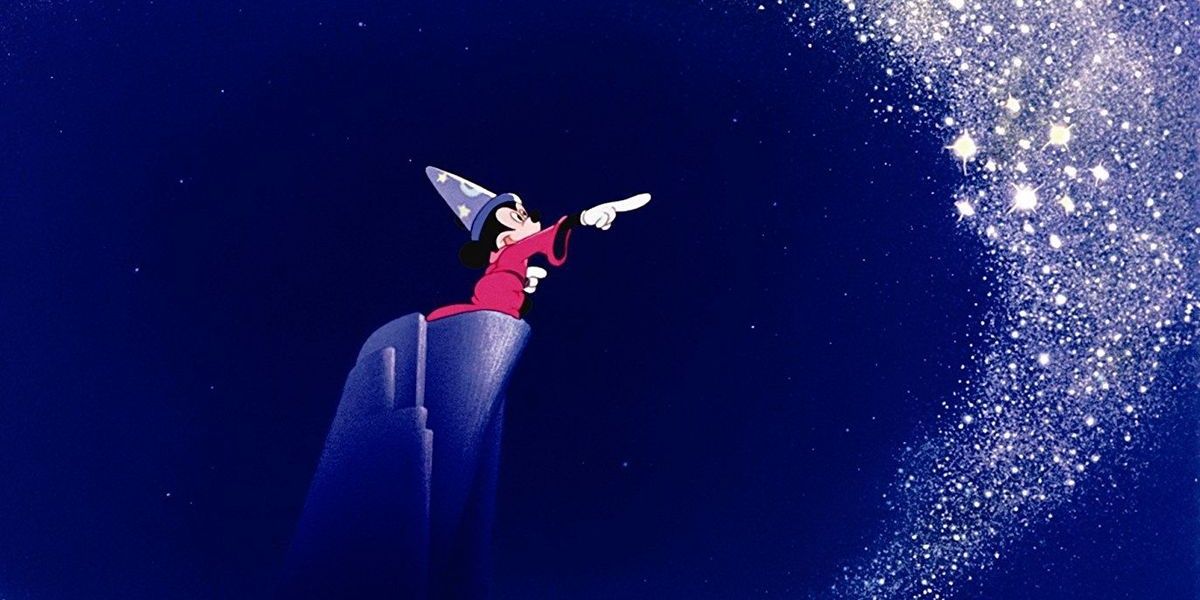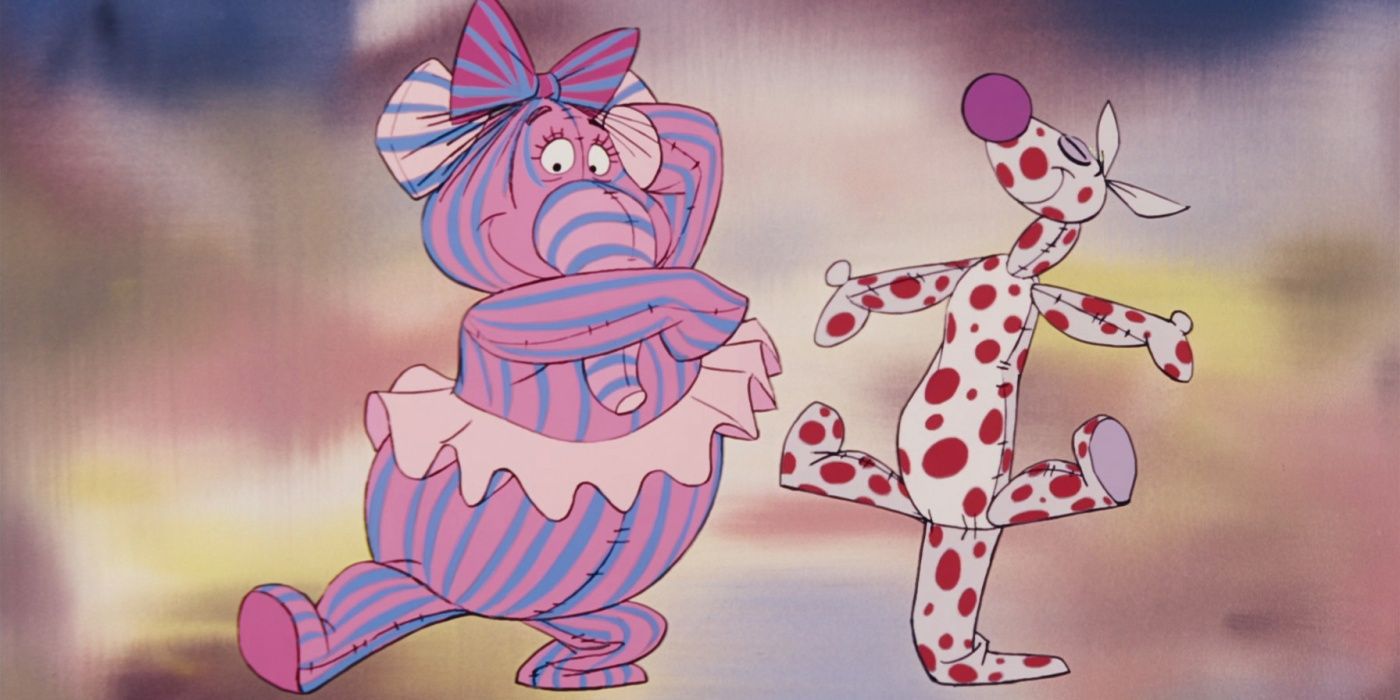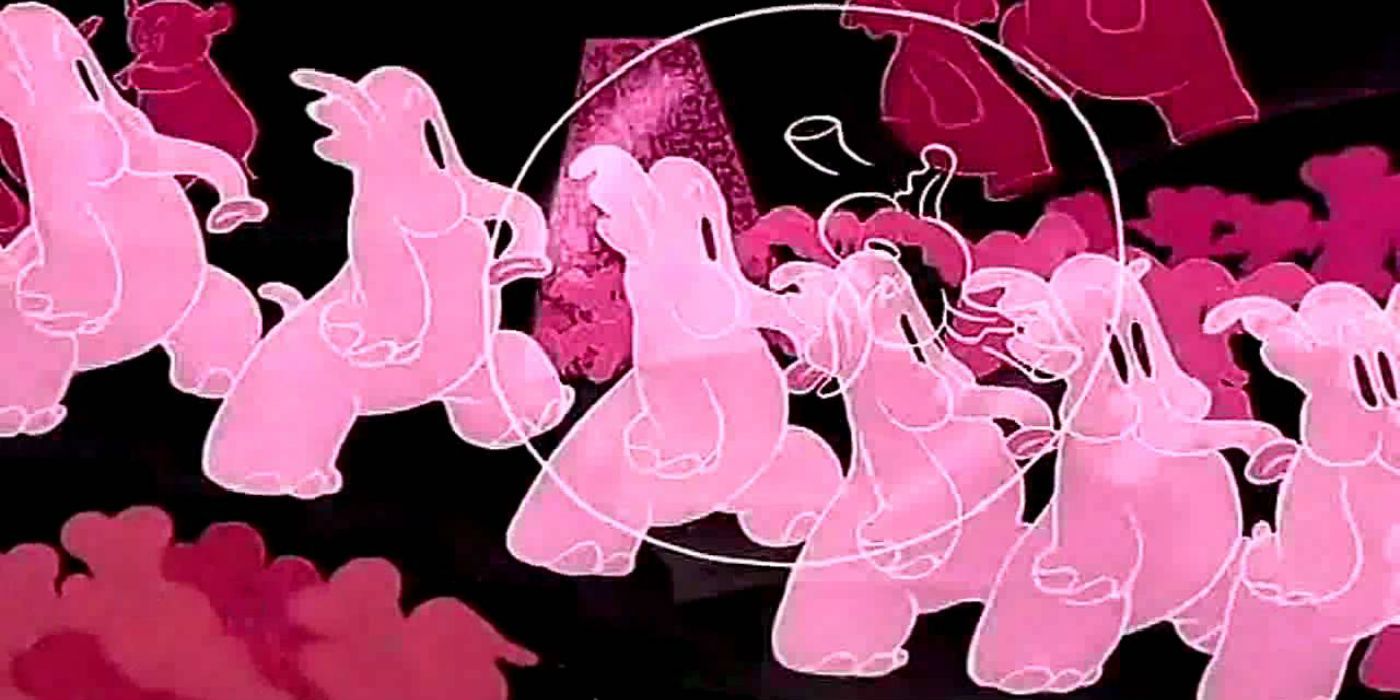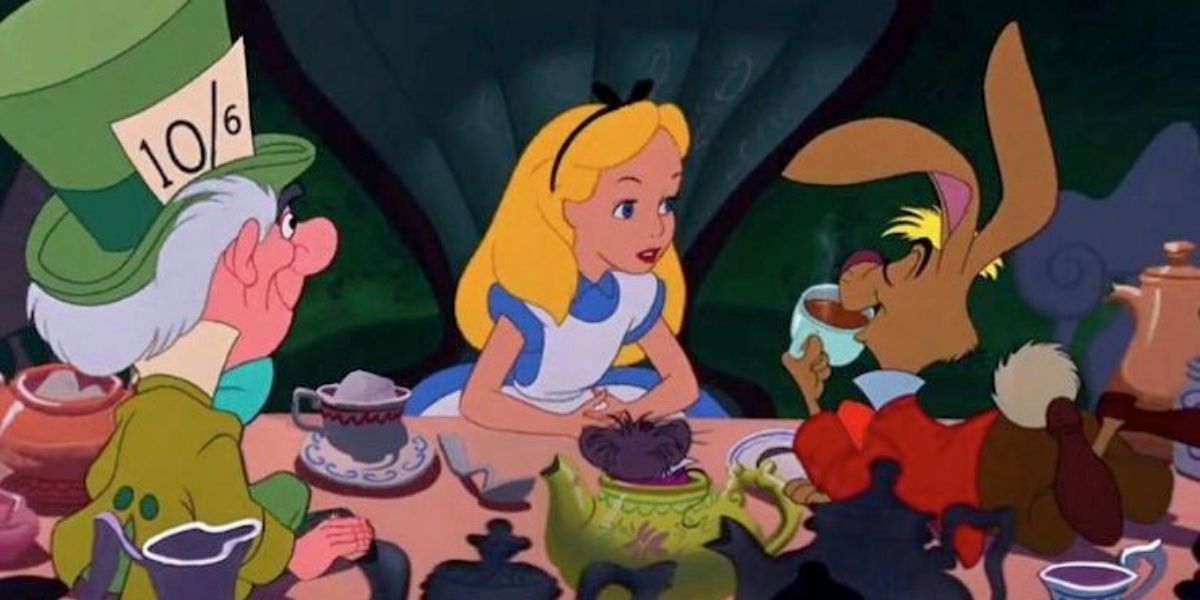The Walt Disney Company has been in the business of making dreams come true since the late '20s, it's practically part of Walt Disney World's slogan. So it should come as no surprise to even the greenest of Disney fans that the studio has no problem bringing dreams to life in an animated medium.
In dreams, the laws of nature and logic do not apply, so they allow the artists and filmmakers to create and imagine at their own will, resulting in some of the most creative sequences in many of their films. Whether they concern giant floating honey pots or technicolor pachyderms, Disney knows how to create some seriously impressive dreamscapes.
Toccata And Fugue (Fantasia)
The opening sequence of Disney's Fantasia essentially takes the dreaming concept quite literally as Deems Taylor explains the creative process of the film. In the introduction, he details how the images the audience is about to see are what the artists imagined when they heard the famous piece of music. What follows is a seamless transition from reality to dreamscape.
At first, the audience is more or less conscious of the orchestra as elements of the strings, horns, and other instruments turn into abstract imagery. The entirety of the musical sequence is purposefully designed to have a vision open to interpretation, but it also starts and ends like a daydream.
Olaf In Summer (Frozen)
Although Olaf is not technically asleep when his visions of summertime fun occur, his famous musical number from Frozen definitely has a colorful dreamscape to accompany his performance. The reason he earns a spot among the best is his fantastical vision of his interpretation of the season.
Olaf is blissfully unaware of the consequences of what happens when ice and snow meet above freezing temperatures. But since the audience is so intoxicated by his enthusiasm, they tend to forget as well. After all, they can't help it if his brand of cheer is 100% contagious.
Ichabod’s True Intentions (The Adventures of Ichabod and Mr. Toad)
The realms of psychology have done many dives into dreams and imaginings, especially how they represent internal thoughts in the subconscious. A fine example of this theory is Ichabod Crane's fantasy after he encounters Sleepy Hollow's resident coquette, Katrina Van Tassel.
Most casual viewers assume Ichabod Crane is just an innocent school teacher who gets nabbed by the Headless Horseman, but his dream brings his true nature to light. He's not just after her heart, he's after her father's farm. "There's gold in them acres, and that ain't hay." What happens here is a brilliant example of visual storytelling.
Dream Productions (Inside Out)
2015's Inside Out is one of the most surreal films to ever come out of Pixar, but the way they handle the concept of dreaming is exceptionally creative and comical. Dreams have often been compared to movies or TV shows, but Riley's imagination takes it literally as her mind produces her dreams as literal productions.
In just a few short minutes, the entire gamut of dreaming is covered from the surrealist imagery of dancing cupcakes to a giant nightmare clown. It's intriguing, it's thorough, and it's put in a way that audiences of any age can understand.
Everything Is Honey (Winnie The Pooh)
Winnie the Pooh might have the reputation of being a bear of very little brain but he certainly doesn't like anything in the imagination department, especially when he lets it run away with him. Since a quest to rescue Christopher Robin from the clutches of the Backson leaves little time for snacking, Pooh's mixture of fatigue and hunger causes him to vividly hallucinate.
Things definitely get weird in the woods. What transpires is a sticky, sweet, honey-themed musical number that comes equipped with melting, Salvador-Dali-worthy imagery as everything around him turns to pools and pots of his favorite treat. Unfortunately for Pooh, while his brain is fooled by the daydream, his mouth and stomach are not.
Hellfire (The Hunchback Of Notre Dame)
The song "Hellfire" has often been considered the ideal Disney villain song from both a visual standpoint and a theatrical one as well. And while it's not written as a dream, the evidence is there. The hellish inferno Frollo interacts with after encountering the beautiful Esmeralda is a reflection of his internal struggle, something that can often be represented in dreams or visions.
The sequence does what all great musical numbers should do, which is to express to the audience what the character is feeling internally through music. But it's the battle of conscience and subconscious desires that drives the turmoil forward, making Frollo a more complex character than just a sinister minister.
Mickey’s Magic (Fantasia)
Once again, Fantasia wows with its astounding and imaginative imagery, this time with"The Sorcerer's Apprentice." As Mickey casts his spell on the broomstick with Yen Sid's magic hat, the power soon goes to his head and causes him to drift to sleep in his master's chair while watching the broom do his work. Like so many characters, his imagination gets the best of him.
When Mickey envisions himself as an all-powerful wizard of arch-mage level ability as he conjures waves, storms, and even the very stars from the cosmos. It's all fun and games until the brooms start flooding the basement.
Heffalumps And Woozles (Winnie The Pooh)
In Pooh's defense, it was the '70s and psychedelic imagery was all the rage. Since it's already been established that Pooh has an overactive imagination, the fact that he's highly vulnerable to Tigger's suggestion of honey-hungry Heffalumps and Woozles should come as no surprise that his anxiety over losing his precious honey causes him to dream.
The entirety of the sequence is a manifestation of Pooh's honey obsession and anything that keeps him from his sweets is deemed a deadly threat. The colorful creatures that pounce on him in his dream might not be threatening to onlookers, but it's a waking nightmare for Pooh.
Pink Elephants On Parade (Dumbo)
If there's one sequence nearly everyone takes away from Dumbo, it's the absolute acid trip that is "Pink Elephants on Parade." While their antics might not be what many consider threatening, the large black-eyed elephants were intentionally and unapologetically frightening.
Not only can the creatures shapeshift, multiply, and otherwise manipulate their bodies, but they can mess with the very fabric of their reality. Sometimes they're cute, sometimes they're intimidating, and sometimes they don't know what they're trying to be.
The Entirety of Alice In Wonderland (Alice In Wonderland)
There's a very good reason Disney's Alice in Wonderland was more popular in the '60s than it was when it originally premiered. While the movie relies on the cliché of "it was all a dream," few movies outside of The Wizard of Oz could get away with what Wonderland does.
Walt Disney always said that Alice's story needed to be a cartoon first, and as shown by the various colorful characters and trippy visuals seen in the film, his animators loved that idea. With mad tea parties, hooka-smoking caterpillars, and a wild game of croquette, "feed your head" starts to sound like the logical option after a while.

